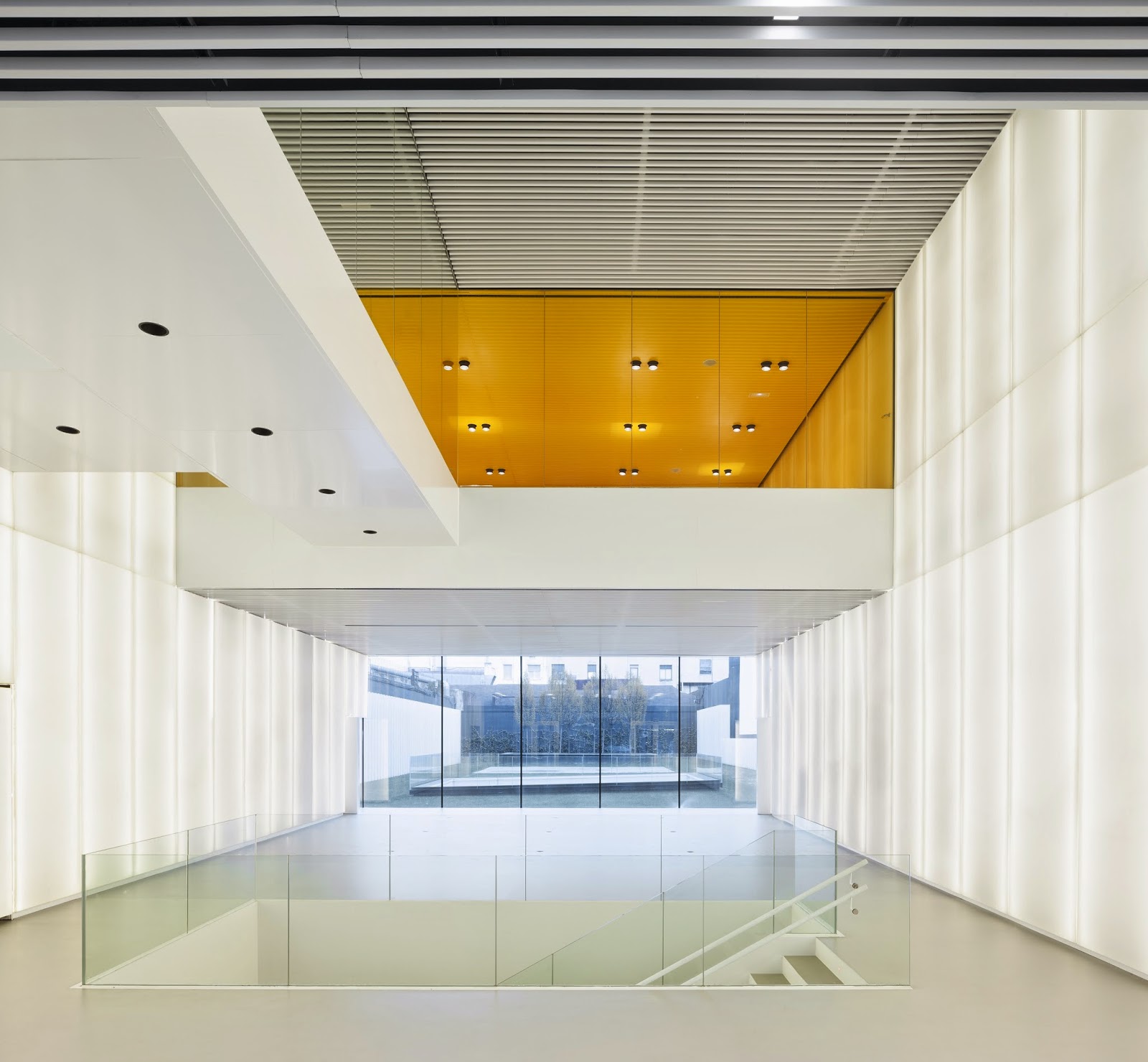Projects Wanted is an initiative promoted by DIMSCALE Blog, in which we
invite Architecture offices to share their new projects with us. We are open to
receive projects from all around the world, regardless of
their dimension or typology. Please send us high quality photos
(indicating their authors), drawings and descriptive texts in English to
our Marketing e-mail - david.cardoso@dimscale.com. It will be our pleasure to help spreading new Architecture concepts and ideas.
ARCHIVO EUSKADI
ARCHIVO EUSKADI
Bilbao, Spain
"The
building is located in María Díaz de Haro Street, close to the main avenue of
the city of Bilbao, the Gran Via. The plot measures 20 metres between the party
walls of the adjoining buildings by 70 metres deep, and forms part of one of
the blocks of the Ensanche (widening of the city) of Bilbao.
Below
ground, the building occupies the entire plot. Above ground, the building is 25
metres deep, following the criteria established in the planning regulations.
The
program is organized by floor, depending on the degree of access control of the
different uses of the building.
The ground floor, first floor and part of the first basement floor are
for free access public uses: the main lobby, reception area, and several
exhibition rooms that can also be used as a multifunction space. Through the
lobby on the ground floor, the garden is accessed, a space designed to
accommodate different uses such as open-air exhibitions, a reading area or area
for film projections.
On the second floor is the reading room and documentation consultation
area, accessed by the public upon accreditation at reception.
On the remaining floors above ground are the administration areas,
laboratories, and documentation processing areas. These are all non-public use
areas. Below ground, and also for private use, are the document vaults, meeting
rooms and parking facilities. These spaces are accessed directly from the
street level by a car lift.
The
main façade has been designed as a vibrating glass front that increases the
perception of the building, breaking with the flatness of the street and emphasizing
its location. The design seeks great transparency, allowing the workings of the
building and the structure to be understood from the exterior. The outer glass
skin is printed with extracts of texts from some of the documents preserved
within the archive, in such a way that the building is not seen as sealed
place, private and closed off from the citizen.
The
interior façade has been designed with a language that tries to establish a
formal dialogue with the rest of the buildings of the block, while retaining
the contemporary character of the building. This façade and garden seeks to
project a friendly image to the users of the courtyard, dignifying a typology normally
uncared for in the buildings of the Ensanche.
In
the interior of the building, we have opted for double height ceilings, with
visible crossing points that will enrich the relationship between the different
uses existing in the building. The planned work areas are clear, free of
columns and flexible in order to facilitate adaptability to possible functional
changes.
As
much of the program has been developed underground, the use of natural light
and ventilation has been maximized, in such a way that the lobbies to access
the document vaults or garage, which is 20 metres below ground level, have natural
light and ventilation. The nucleus of vertical communications and the nucleus
of the lavatories of the building above ground level also have natural light. As a result, most of the spaces and areas of
circulation are bright and pleasant.
The
walls of the basement, which occupies the entire plot, have been executed using
the hydrofraise technique, allowing them to be terminated before excavation
commenced on the rock terrain. This decision meant that the execution times of
the basement works were shortened and effect of vibration on the adjacent
buildings was significantly reduced. Some of the surrounding buildings are
almost 100 years old.
The
primary use of the first three basement levels is that of a document archive,
with capacity for 20 linear kilometres of shelving; equipped with an air
conditioning system to control temperature and humidity, as well as a fire
protection system using mist extinguishing.
A
highly efficient air conditioning system has been designed which incorporates an
enthalpy recovery and free cooling system, taking full advantage of the
internal and external conditions to reduce energy consumption. In addition, in
the courtyard of the block, a garden has been designed with vegetation around
the air intake chiller which will help to cool the air in the hottest months of
the year, allowing the system to function in a more efficient way.
The
energy used for lighting is limited through the use of high-performance
equipment and taking advantage of diffused light to illuminate all the areas of
movement in the basements and garage, as mentioned above. Despite the depth of
20 metres, the use of light colours and light wells results in theses spaces being
bright during daytime periods and not requiring artificial lighting."
- ACXT

































No comments:
Post a Comment
Note: only a member of this blog may post a comment.